The 10 main tourist attractions of Seville
Seville
Like all the big cities in Europe, Seville has attractions that must be seen, but The Capital of the Andalusian Region also has a quixotic quality that travellers crave more: the atmosphere. While the city’s vibrant mix of Gothic, Mudejar, Renaissance and modern architecture is dazzling, it’s the Sevillian lifestyle that makes a trip to Seville unique and memorable.
There is an irresistible vitality in Seville that bathes the fourth largest city in Spain with a warm and sunny glow. Rocking with the rhythmic pounding of a flamenco dancer’s spiked shoes or dancing all night in a modern outdoor nightclub, it’s hard to stand still in this attractive city. An overview of the main tourist attractions of Seville (click here).las principales atracciones turísticas de Sevilla (clic aquí).
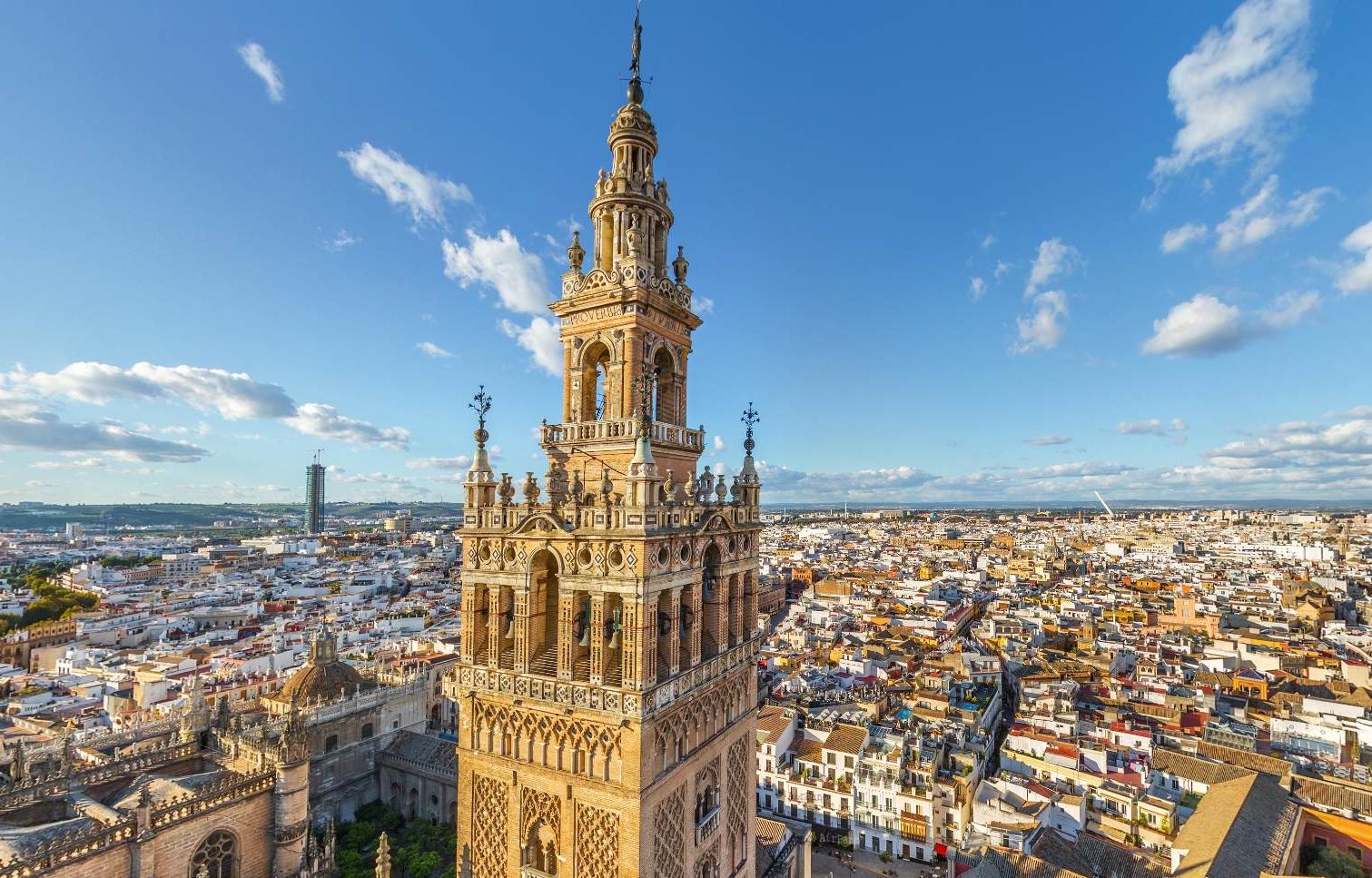
La Giralda
The Giralda is the only remaining structure of the 12th-century mosque demolished during the construction of the Cathedral of Seville. The Moors built the minaret with a series of ramps so that the guards could reach the top on horseback. Today, the 35 ramps make it easy for visitors to climb to the top for panoramic views of the city below. The bell tower is crowned by a bronze weathervane called El Giraldillo, which is a symbol that represents the triumph of faith. The entrance to the tower is located in the northeast corner of the cathedral.
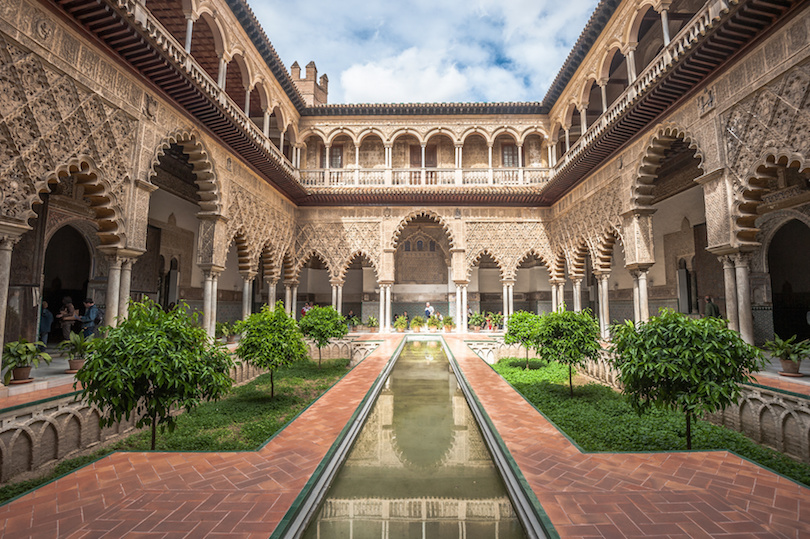
Reales Alcázares de Sevilla
The complex of Alcázar, palaces, courtyards and royal gardens, still used by the Spanish royal family at times state, has undergone many transformations throughout its more than a thousand years of history. In the 11th century, Moorish Muslims built a palace on the site of a 10th-century fort, which became a Gothic-style structure in the 13th century. One hundred years later, King Pedro hired Moorish artisans to rebuild and expand the palace in Mudejar style. From the starry design of the vaulted ceiling in the Hall of Ambassadors to the delicate arches and plasterwork of the Courtyard of the Maidens, the Palace of Don Pedro is considered one of the main tourist attractions of Seville.
Schedules and rates to visit Los Reales Alcázares.
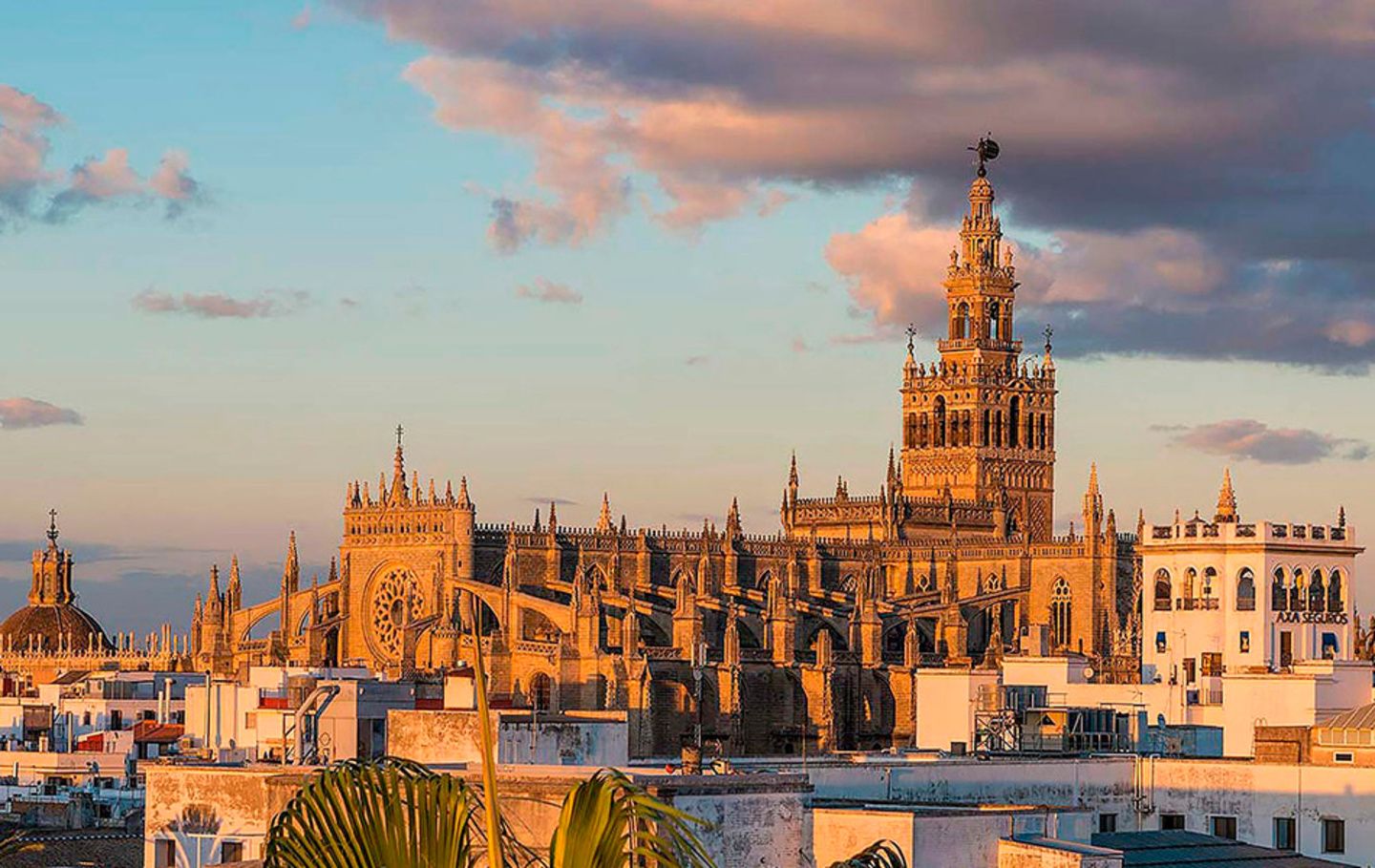
Catedral de Sevilla
Built on the site of a large Almohad mosque, the Medieval Cathedral of Seville was built to demonstrate the power and wealth of Seville after the Reconquest. At the time of its completion in the 16th century, it supplanted the Hagia Sophia as the largest cathedral in the world. It remains the third largest church in Europe and the largest by volume. The gigantic Gothic structure features an altarpiece depicting the life of Jesus that includes more than 1,000 figures covered in gold leaf. The cathedral’s artistic treasures include the Descent of the Cross of Pedro de Campaña, the Santa Teresa of Francisco de Zurbarán and the masterpiece of The Immaculate of Bartolomé Esteban Murillo. Inside the transept of the church is the tomb of Christopher Columbus.
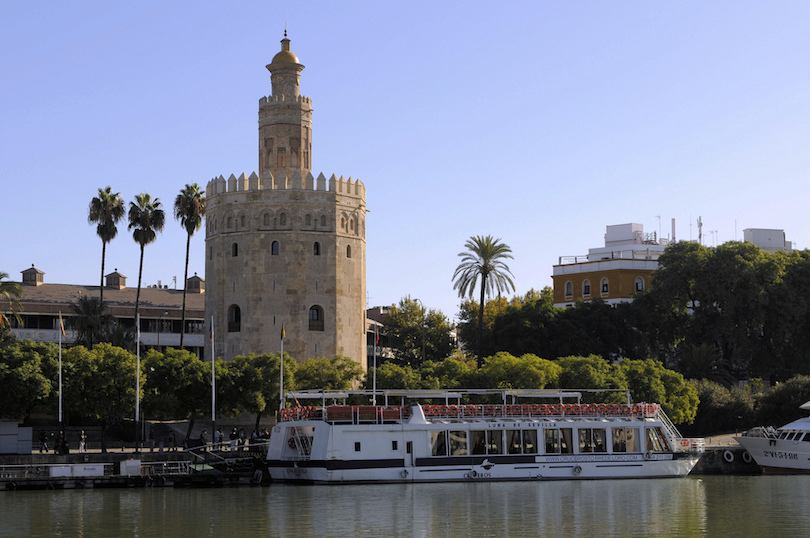
Torre del Oro
No other structure in Seville explains better the role played by the Guadalquivir River during the Spanish colonial period than the Torre del Oro, the Golden Tower. Seville owed much of its success in maritime trade to the navigable river, which offered ships more protection than a traditional European port. For centuries, a heavy chain crept across the river from the tower to protect the city from marine invaders. Built-in the early 1200s, the watchtower’s name comes from the golden glow that reflects the reflection of its building materials on the river. Today, the tower houses a maritime museum that describes the importance of the river throughout the history of Seville. Visitors can enjoy views of the canals and the city from a rooftop viewing platform.
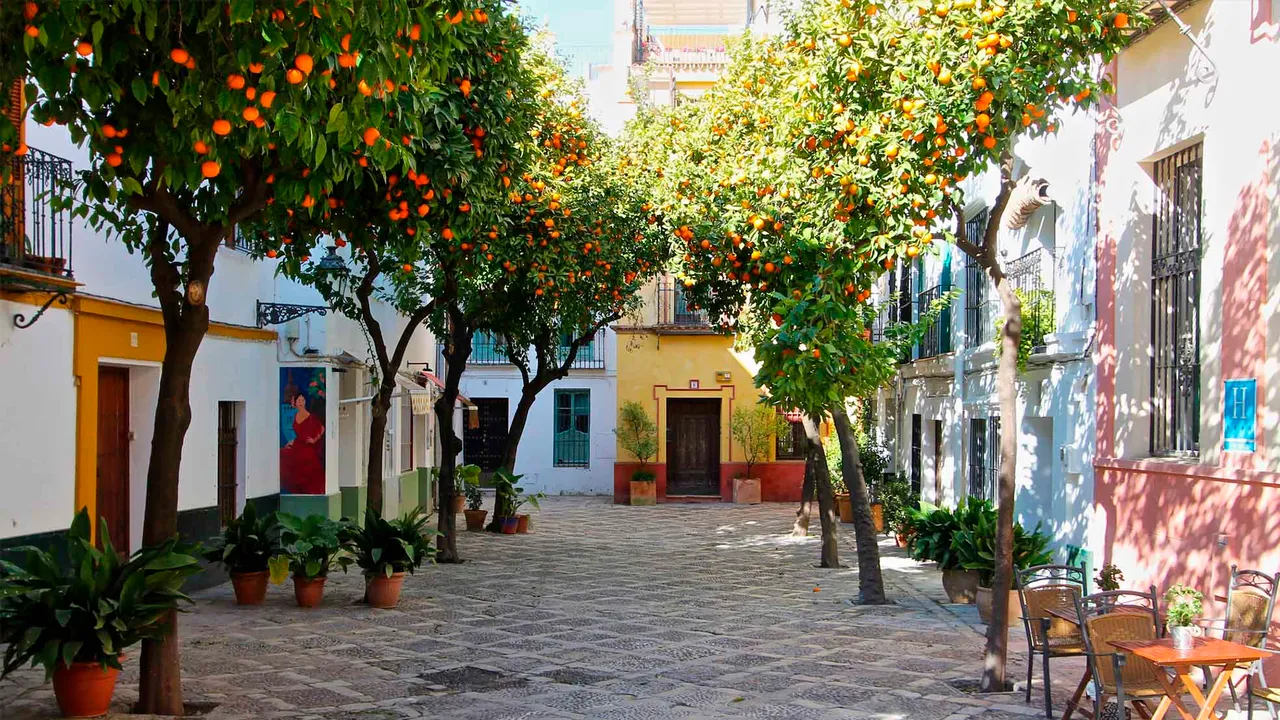
Barrio Santa Cruz
Located east of the Old City, the Barrio Santa Cruz is bordered by the Guadalquivir River. The quarter was the Jewish quarter of Seville until the late 1300s when synagogues were closed, homes were confiscated and thousands of Jews were killed or forced to convert to Christianity. A neighbourhood of narrow, cobbled streets and alleys, the neighbourhood is filled with orange trees, colourful tiled courtyards and small-scale squares, as well as a wide variety of tapas bars and restaurants. Closed to vehicle traffic, the neighbourhood is perfect for visitors who want to experience the atmosphere of a medieval Spanish city.
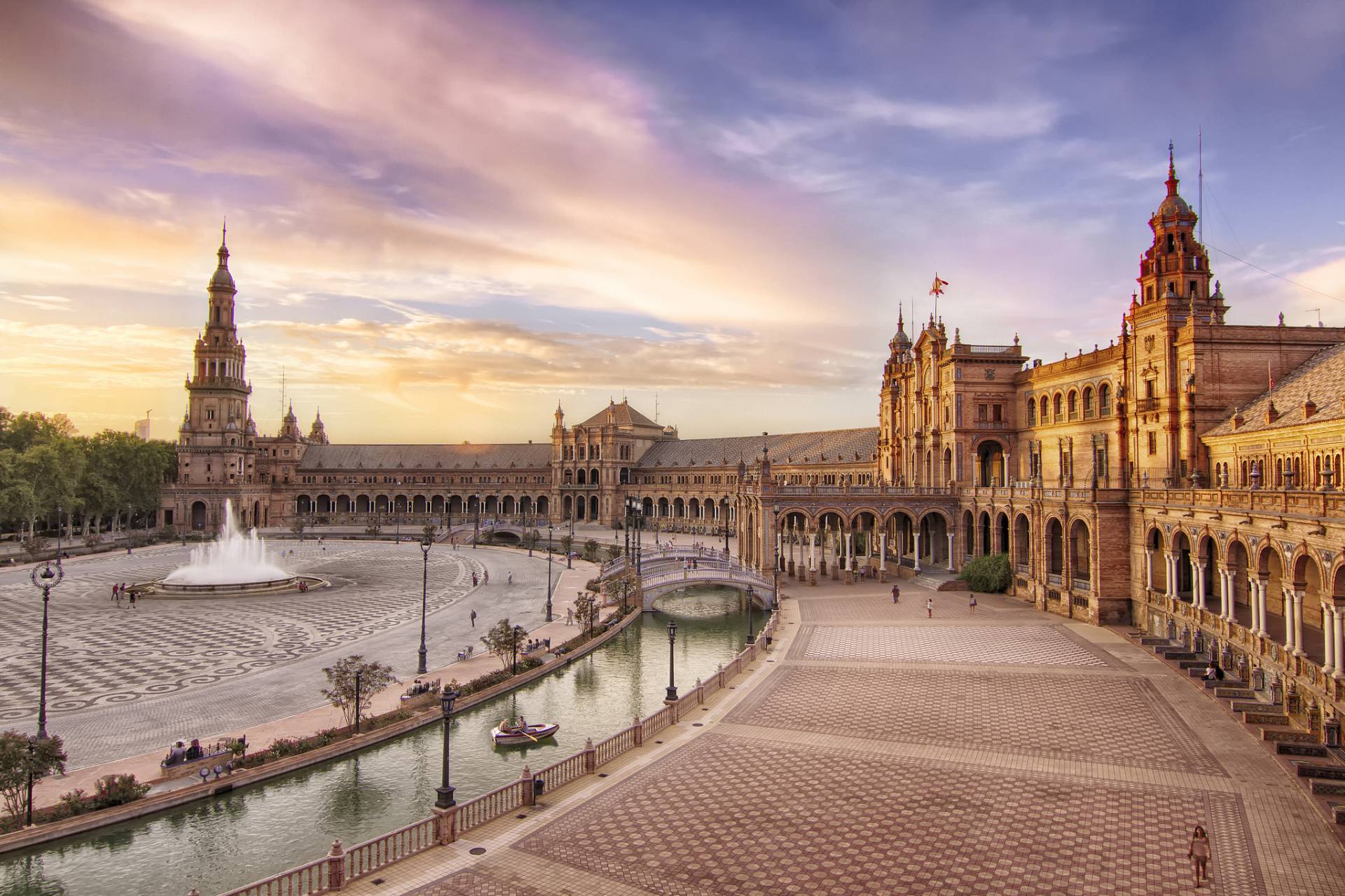
Plaza de Espana
In 1914, the Sevillian architect Aníbal González began to design a series of buildings in preparation for the next Ibero-American Exhibition in 1929. Located near the Santa Cruz neighbourhood in María Luisa Park, the building was built for the world fair to show Spain’s role in history, industry and technology. Among the exhibits housed in the main building were manuscripts written by the Spanish explorer’s Colón and Cortés. The buildings are a rare example of the regionalist revival style of architecture, characterized by the use of local materials. Today, structures serve as government offices.
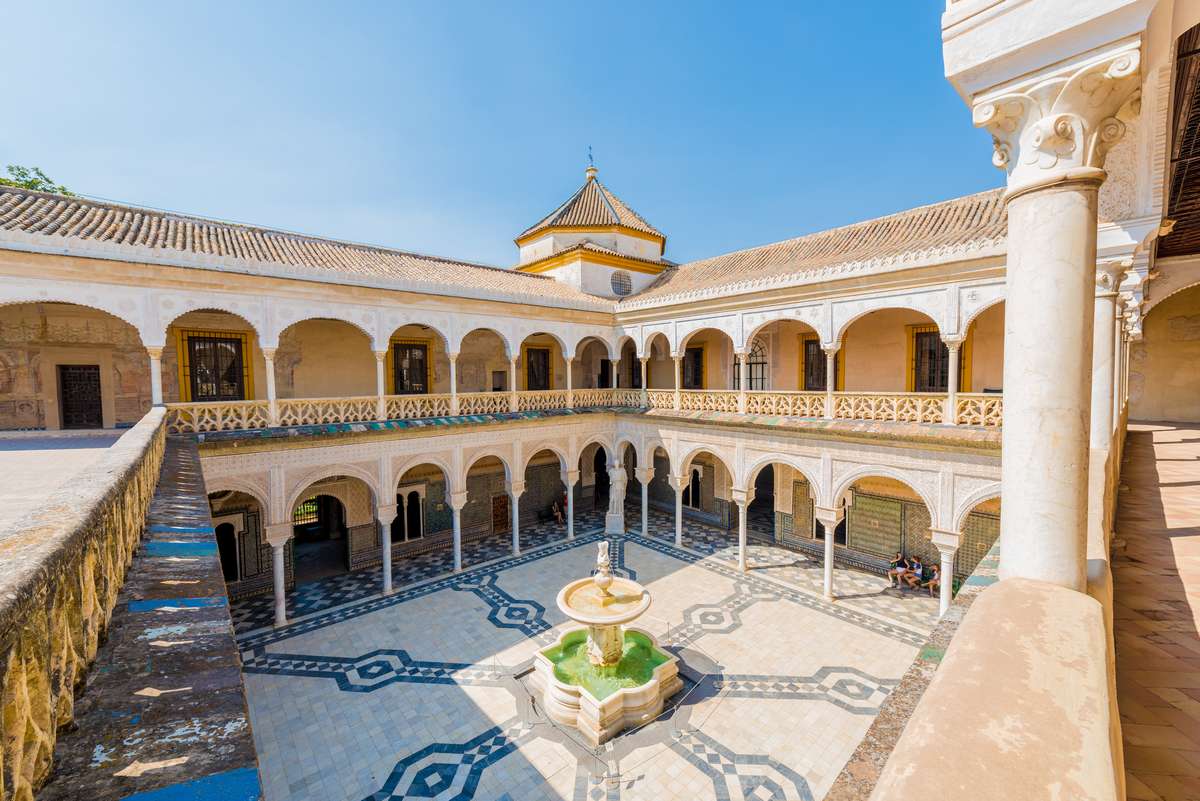
Casa de Pilatos
Located next to the Pilates Square, La Casa de Pilatos is considered the best example of an Andalusian Palace. Designed by the Genoese architect Antonio María Aprile in 1529, the «Casa de Pilatos» was named after the son of the original owner, Fadrique Enríquez de Rivera, who made a pilgrimage to Jerusalem in 1519. Although the building is privately owned by the Medinaceli family, it is open to the public for guided tours much of the year. Outstanding features include a series of bullfighting paintings by Francisco Goya, a 16th-century marble door and a grand staircase adorned with a Mudejar-style honeycomb ceiling.
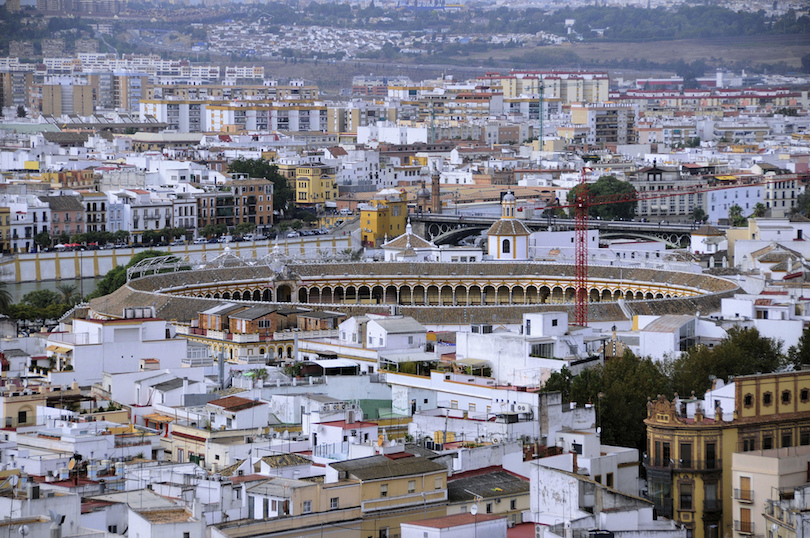
Plaza de Toros de la Maestranza
For visitors interested in the Spanish Tradition of Bullfights, the Plaza de Toros de la Maestranza is an unmissable destination. The oldest bullring in Spain, with 14,000 seats, dates from 1758, and bullfights are still held here on Sundays from spring to autumn. However, visitors do not need to see a bullfight to learn more about tradition. The adjacent museum exhibits artefacts and information about famous bulls and matadors. Tickets include admission to the museum and a guided tour of the ring.
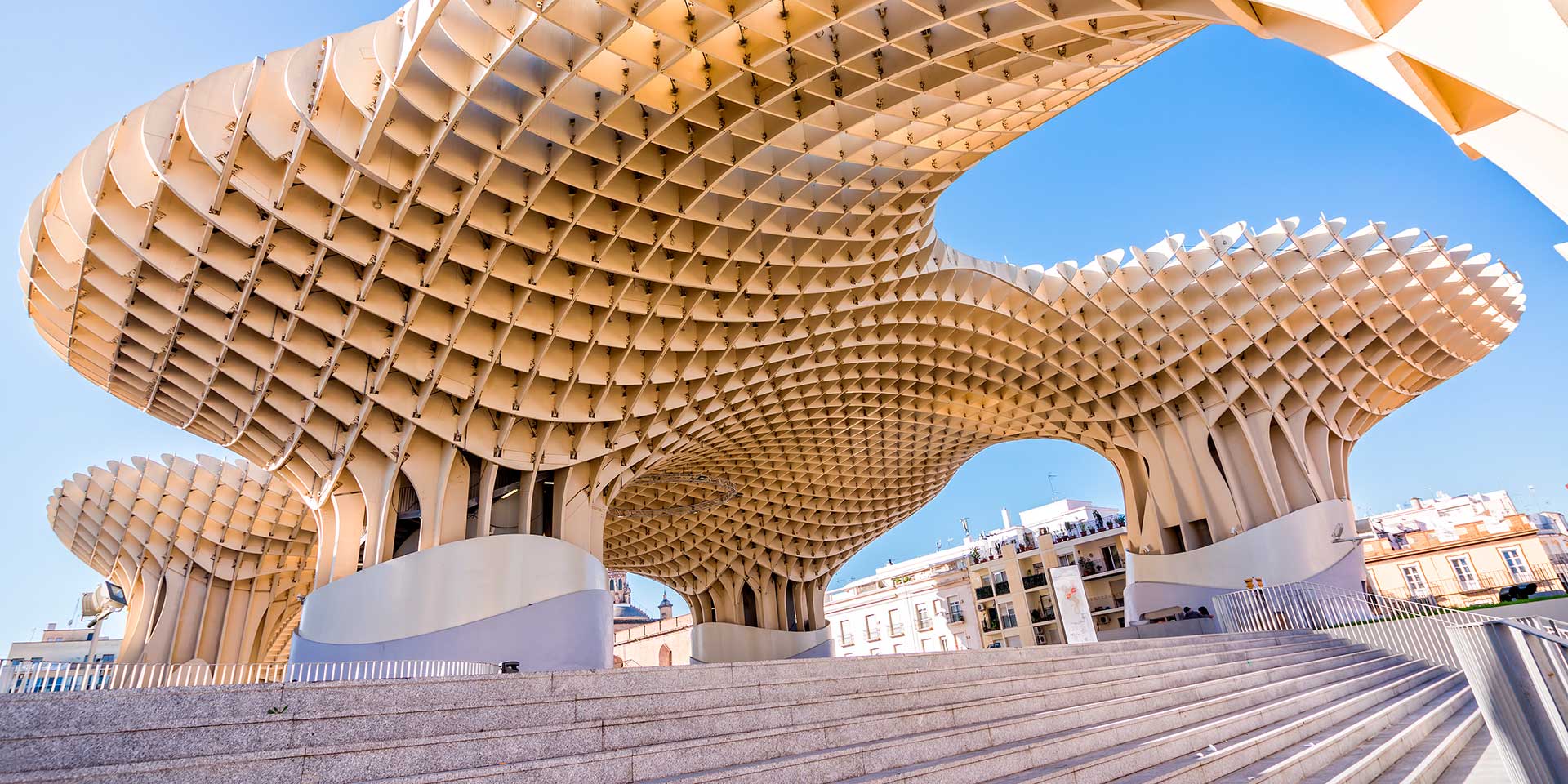
Metropol Parasol (Las Setas)
Located in Plaza La Encarnación, in the Old Town district of Seville, the newly completed Metropol Parasol is described as the largest wooden structure in the world. Designed by German architect Jurgen Mayer-Hermann, the building features six giant umbrella-shaped structures made of birch wood imported from Finland. Nicknamed The Mushrooms of the Incarnation, or mushrooms of Incarnation, the modern design has generated as much controversy as the exorbitant price of the building. Delays and changes in construction methods doubled the estimated cost of 50 million euros. The structure is home to a market, an antique store, a restaurant and an outdoor plaza.
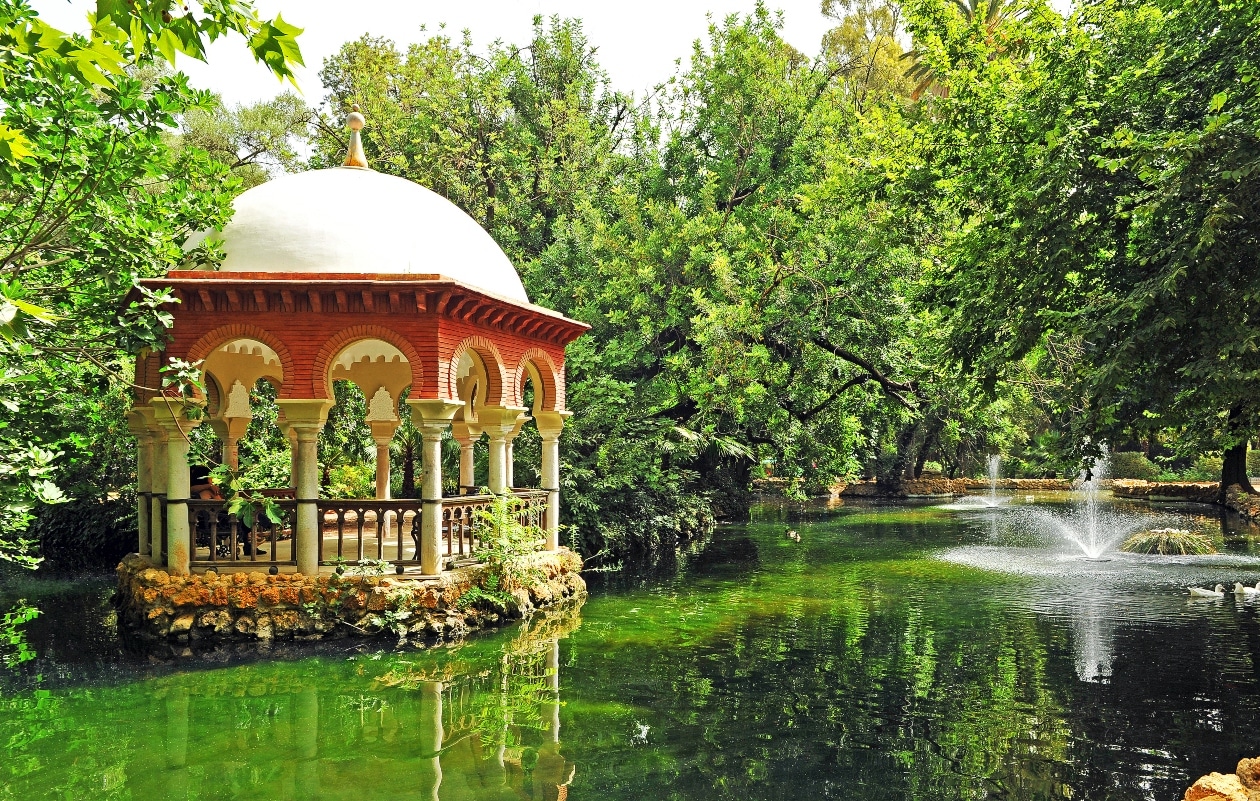
Parque de María Luisa
Seville’s main public park, the María Luisa Park, stretches along the Guadalquivir River, near the city centre. Most of the park’s grounds were originally part of the gardens of the San Telmo Palace and were donated to the city in 1893. Landscape designer Jean-Claude Nicolas Forestier is responsible for the current configuration of the park. The park is known for its large population of birds, including pigeons, swans, parrots and ducks. The statues, ponds and fountains scattered throughout the park make it a picturesque and pleasant place to relax in the sun.


